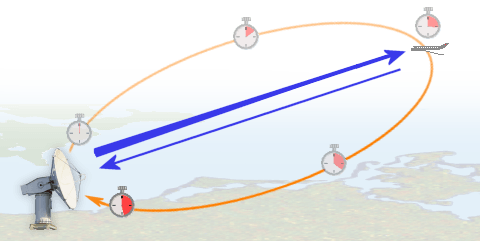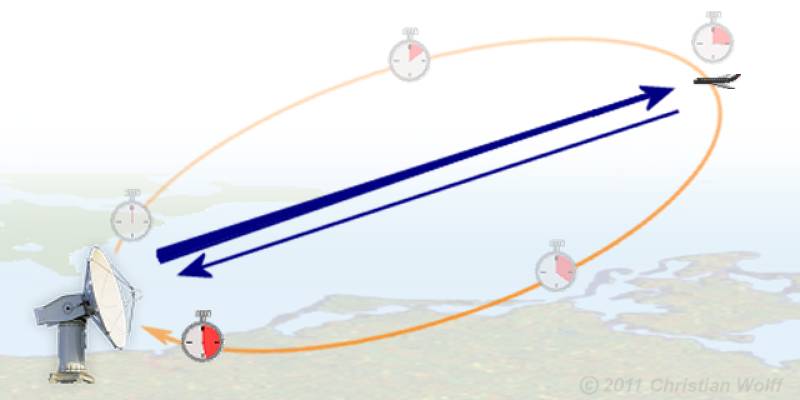Physical fundamentals of the radar principle

Figure 1: Radar principle: The measuring of a round trip time of a microwave pulse

Figure 1: Radar principle: The measuring of a round trip time of a microwave pulse

Figure 1: Radar principle: The measuring of a round trip time of a microwave pulse
What is Radar?
Physical fundamentals of the radar principle
The basic principle of operation of primary radar is simple to understand. However, the theory can be quite complex. An understanding of the theory is essential in order to be able to specify and operate primary radar systems correctly. The implementation and operation of primary radars systems involve a wide range of disciplines such as building works, heavy mechanical and electrical engineering, high power microwave engineering, and advanced high-speed signal and data processing techniques. Some laws of nature have greater importance here.
Radar measurement of range, or distance, is made possible because of the properties of radiated electromagnetic energy.
- Reflection of electromagnetic waves
The electromagnetic waves are reflected if they meet an electrically leading surface. If these reflected waves are received again at the place of their origin, then that means an obstacle is in the propagation direction.
- Electromagnetic energy travels through air at a constant speed,
at approximately the speed of light,
- 300,000 kilometers per second or
- 186,000 statute miles per second or
- 162,000 nautical miles per second.
- This energy normally travels through space in a
straight line, and will vary only slightly because of atmospheric and
weather conditions. By using of special radar antennas this energy can be focused
into a desired direction. Thus the direction (in
azimuth and
elevation)
of the reflecting objects can be measured.
These principles can basically be implemented in radar system, and allow the determination of the distance, the direction and the height of the reflecting object.
(The effects atmosphere and weather have on the transmitted energy will be discussed later; however, for this discussion on determining range and direction, these effects will be temporarily ignored.)
Why Radar?
Advantages
Radar has many advantages compared to an attempt of visual observation:
- Radar is able to operate day or night, in lightness or darkness over a long-range;
- Radar is able to operate in all weathers, in fog and rain, it can even penetrate walls or layers of snow;
- Radar has very broad coverage; it is possible to observe the whole hemisphere;
- Radar detects and tracks moving objects, a high-resolution imaging is possible, that results in an object recognition;
- Radar can operate unmanned, 24 hours a day, 7 days a week.
